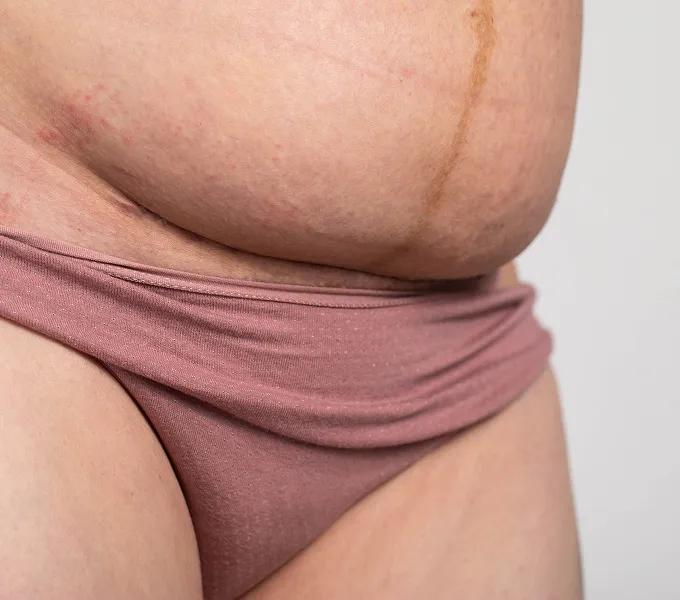
The 10 Best Postpartum Pelvic Floor Exercises
Nine months of pregnancy and birthing a baby can do a number on your body and, more specifically, on your pelvic floor. You may find yourself running to the bathroom, leaking when you sneeze or cough, having pain with sex, or feeling as if your insides are falling out when you run — which can all be signs of pelvic floor dysfunction. Welcome to the 4th trimester :)
It's important to know that you don't have to "just deal" with these symptoms. There are things you can do to retrain and rebuild your pelvic floor so these issues don't become a permanent fixture in your life. Working with a pelvic floor physical therapist will help you determine exactly what's going on, and ensure that you heal your postpartum body efficiently and effectively.
There's no one-size-fits-all solution to pelvic floor dysfunction, but the 10 exercises below are typically safe and effective for waking up the pelvic floor after childbirth and rebuilding your connection with this core muscle group. (Curious about when you can safely return to other workouts? Keep scrolling after the exercises for a Q&A on yoga, running, HIIT, and more.)
If you think you may have pelvic floor dysfunction, let your primary care provider know and ask if physical therapy is right for you. You deserve to feel good in your body during postpartum and in every stage of life!
1. Diaphragmatic breathing, supine
- Lay on the ground in a comfortable position. Place your hands on your ribs or belly.
- Inhale, and fill your belly with air as it expands outward into your hands. Tip: Think about expanding your ribs out to the sides as you inhale.
- Exhale and relax your belly back towards your spine, releasing the air through your mouth.
NOTE: Start by taking normal breaths to see where your breath moves. Check in with your chest, ribcage, and abdomen, take notice if any region lacks motion or does all of the moving. This breathing pattern should redirect your breath towards your abdomen in the direction of the pelvic floor.
2. Knee-to-chest stretch, supine
- Lie on your back with both legs straight.
- Bring one knee in towards your chest, holding onto your shin with both hands. Tip: Keep your shoulders relaxed and away from your ears.
- Hold the position and breathe.
NOTE: If you have had hip surgery or replacements, consult your orthopedic specialist prior to performing this exercise for post-op precautions.
3. Piriformis stretch, supine
- Lay down onto your back with your knees bent and feet flat on the ground.
- Cross one leg over your opposite knee, placing the outside of your ankle just above the knee.
- For a deeper stretch, interlace your fingers behind the thigh of your stabilizing leg, and pull your thigh in towards you, lifting the foot off the ground. Tip: Keep your shoulders relaxed and away from your ears for the duration of the stretch.
- Hold the position and breathe.
NOTE: You should feel this in your outer hip, this should not be painful. If felt in the knee or ankle, discontinue this stretch. You can also attempt this while seated.
4. Happy baby
- Lie on your back, and hug both knees into your chest.
- Separate your knees outward towards your sides, and reach with your hands to hold the outer edges of your feet.
- Use your hands to guide your feet open to your sides, with your knees angled down towards your armpits.
- Hold this position and breathe deeply. Think about relaxing all the muscles around your pelvis and pelvic floor. Tip: Relax your shoulders away from your ears.
NOTE: Discontinue if you feel pinching in your anterior hip or groin or numbness and tingling in your legs.
5. Hip flexor stretch, standing
- Start in a standing position facing a wall or with your hands on the back of a chair for support.
- Step one foot back behind you with your toes pointed slightly outward and heel on the ground.
- Drive your hips forward as you bend your other knee towards the wall. Keep your back straight and shoulders relaxed. Tip: It's ok for the back knee to bend a little and for your heel to come up off the floor if needed.
- Hold this position and breathe.
NOTE: If you have had hip surgery or replacements, consult your orthopedic specialist prior to performing this exercise for post-op precautions.
6. Adductor stretch, standing
- Stand in front of a table with your legs slightly wider than hip-distance apart. Lean forward and place your hands or forearms on a table or the back of a chair for balance. Shift your weight back into your heels and lock your knees.
- Keeping your knees locked, lean your hips to the side opposite the leg you want to stretch and hold.
NOTE: You may feel this at your inner thigh and the back of your opposite leg for a mild hamstring stretch.
7. Deep squat stretch
- Inhale as you relax your belly, letting it fill with air.
- Exhale, and draw your belly button in toward your spine as you squat down, letting your knees rotate outward and away from your center. Your heels may lift slightly off the ground. Tip: For added stability, place a yoga block under your glutes, or hold onto a stable surface with one hand.
- Hold the squat and breathe as you focus on relaxing the muscles in your pelvic floor and the surrounding areas.
NOTE: Try to relax your pelvic floor in this pose, if you feel you need to engage muscles to balance, make modifications so you are able to more fully relax.
8. Child's pose, supported with pillow
- Grab a few large pillows. Start on your hands and knees with your hands under your shoulders and knees under your hips. Separate your knees so they are slightly wider than hip-distance apart. Place the pillows stacked between your hands and knees.
- Sit back onto your heels, and lean your upper body forward to rest fully onto the pillows in front of you. Tip: You are now in a child's pose with your upper body supported by the pillows.
- Hold this position and breathe, feeling your belly rise on your inhale, then relax inward toward your spine on your exhale.
NOTE: You can also try this without pillows for a deeper stretch to the back. If you have had hip surgery or replacements, consult your orthopedic specialist prior to performing this exercise for post-op precautions.
9. Kegel, supine
- Laying on your back in a comfortable position.
- Inhale, and fill your belly with air- feeling it rise as you keep your pelvic floor relaxed.
- Exhale, and draw the belly back towards your spine as you contract and lift your pelvic floor muscles performing a kegel.
NOTE: Begin this exercise slowly to build awareness and coordination of your contraction and relaxation. Eventually, this exercise may be used to build strength and endurance in your pelvic floor, depending on your individual goals and needs.
10. Pelvic floor lengthening, supine
- Start lying comfortably on your back.
- Inhale deeply, allowing air to fill your low belly and all the way down into your pelvic floor. Allow your pelvic floor to relax and lengthen down, away from your trunk
- On exhale, allow your pelvic floor to return to its resting/neutral position.
NOTE: you can also do this with other exercises like a deep squat stretch or child's pose.




